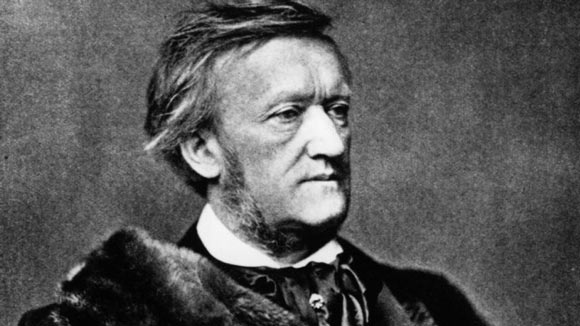
Richard Wagner was a revolutionary Romantic composer, born in Leipzig, Germany on 22 May 1913. His main interests developed at a very early age, when he would enjoy listening to operas, orchestral works and vocal arrangement by composers like Mozart and Carl Weber. With so much to show for at such an early age, many close to him were convinced he was destined for greatness and sheer grandeur. Wagner rose out of criticism and contempt from some of his earlier works and completely transformed the aesthetics of classical Romantic music of the time. His uniqueness stemmed out of an obsession with introducing harmonic elements in his compositions, together with signifying social themes that existed in his earlier days, ultimately attracting a wide array of ethnic populations to his music.
Despite having sound knowledge of the theatrical and orchestral workings, Wagner’s first few attempts at composing operas failed outstandingly, failing to draw out noticeable audiences. Apart from his works concerning operas, he refrained from contributing much to other musical styles and genres, occasionally fashioning a chamber or orchestral piece. Some of these included Symphony In C major (1832), Siegfried Idyll (1869) and American Centennial March (1876). Wagner’s first successful opera was Rienzi (1842), after others such as Die Feen (1833) and Das Liebesverbot (1836) were immaturely received and were not complimented well enough. After the much-deserved flight with Rienzi, Wagner had huge successes with Romantic themed operas such as Der Fliegende Hollander (1843), Tannhauser (1845) and Lohengrin (1850). All three of these pieces featured remarkable changes in thematic contexts, with a larger inclusion of emotion and orchestration in the organization of the operas.
Perhaps Richard Wagner’s most prized and sought-after composition was Der Ring Des Nibelungen, or the Ring Cycle, a collection of 4 separate operas worked on over a period of 22 years. These operas would loosely focus on themes relating to old Germanic and Greek mythology, with Wagner using his own libretto for all of the parts. The first two of this Ring Cycle were named Das Rheingold (1854) and Die Walkure (1856), featuring perfect blends of poetry and music appearing together as appraisable drama. Before returning to completing the latter half of the Ring Cycle, Wagner took a break from opera and wrote his famous love story Tristan und Isolde (1857-59), fulfilling the purpose of diverging Wagner’s interests in classical music and molding it in to a more reformed outlook. In 1876, the last two parts of the four-part opera collection premiered, under the respective labels of Siegfried and Gotterdämmerung. After the commercial success of the Ring Cycle, the only other important contribution Wagner made to opera was Parsifal (1882), bearing some criticism on some themes it unfolds in the acts.
Wagner was quite different when it came to composing classical music of the 19th century, in that he would contribute his own libretto and music for most of the compositions. His stage presence and the conceptual framework behind his work were quite unconventional as well, focusing primarily on the elements concerning visual, poetic, musical and dramatic arts. In the forty odd years that Wagner composed music, his ideas and perceptions managed to creep in to not in the hearts and minds of music lovers, but also those primarily interested varied fields such as philosophy, literature and theater. Richard Wagner passed away on the 13 February 1883 in Venice, Italy.